Bread Baking Technique #10 - The technique behind laminated dough used for pastry, puff pastry, croissant, etc.
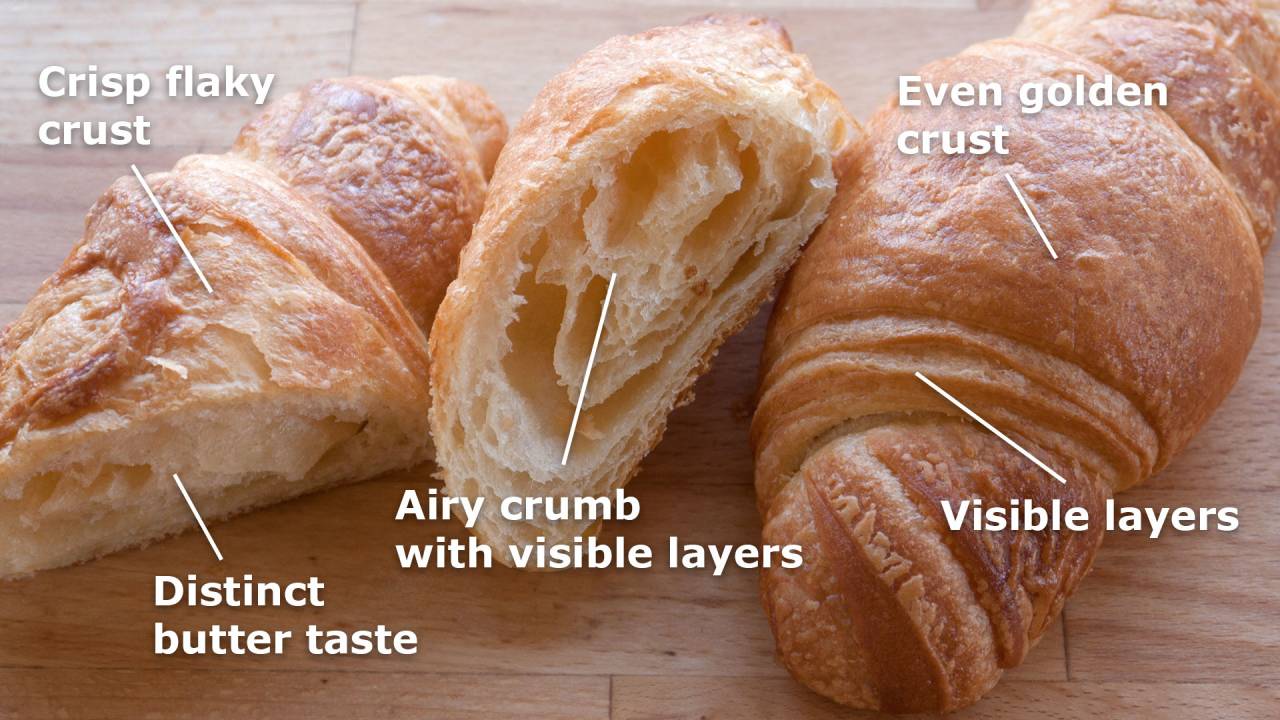
The ideal croissant
First off I recommend that you look at my croissant recipe. Some of the things I talk about can be seen in that.
For me a croissant must be very crisp on the surface and crunchy when chewing it. The crust should flake off a little. It must have a baked nutty buttery flavor.
On the inside it should be airy and slightly chewy. But no more airy than you can get butter, jam, cheese or chocolate to stick.
When reading about recipes for croissant, there's always comments like "In a small bakery in Paris, I got the ultimate croissant. Consisting of 8000 layers, and here's the recipe." Others say "over 70 layers is a must", someone says 9 layers, etc., etc. Well ok I've never seen the 8000 layers claim.
but they all claim to be the "only true" croissant recipe.
Of course this is nonsense!
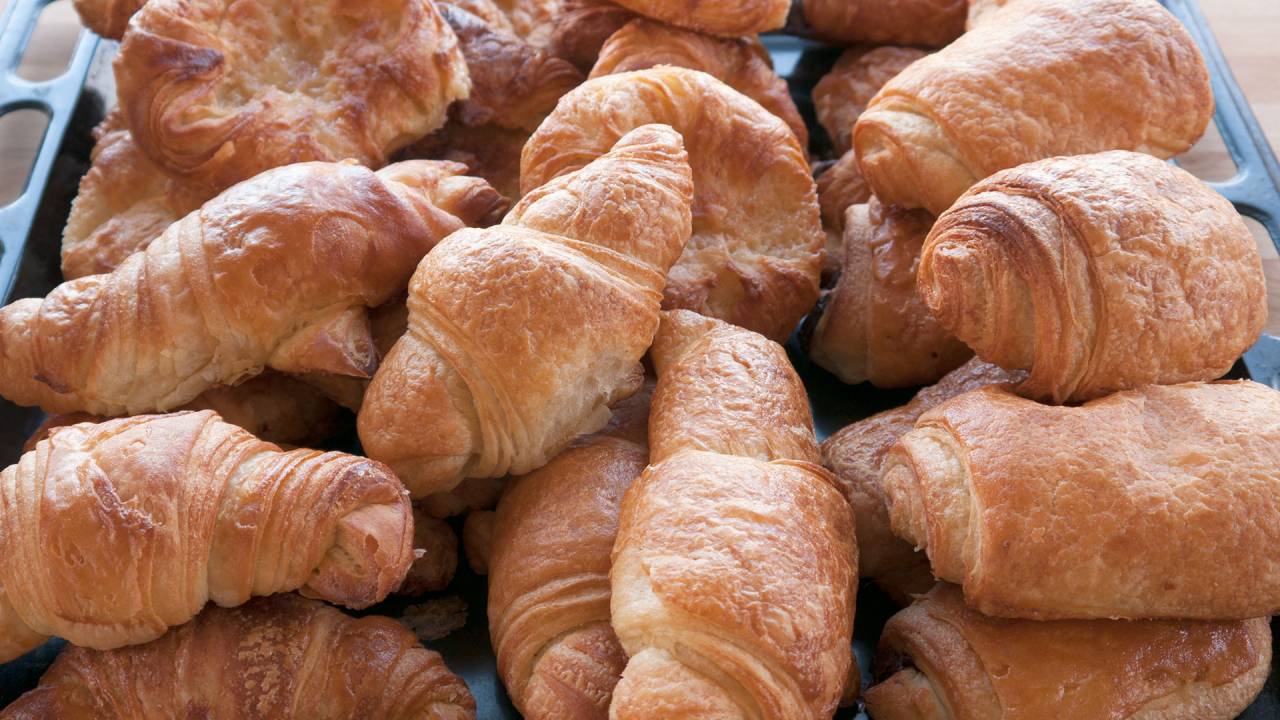
Laminated bread that croissant and danish pastry is made of, is a method that can change according to your taste. Depending on how you modify it, you get different results. But the method can be stretched pretty far before a croissant loses its "croissantes".
To find the best recipe I have made a loooong series of experiments to see what changes do what to the end result.
I used the same dough for all recipes. It can be found on my croissant recipe .
What I eksperminterede with was the amount of rolling butter and the number of layers made with the butter. Thus the number of folds.
"Rolling butter" btw. is just normal butter. Not a specific product.
The amount of rolling butter
For convenience, it is estimated by the ratio between the weight of dough and rolling butter.
When making sweet danish pastry you typically use 1 part butter to 2 parts of dough. That is 50% rolling butter.
For croissants and other non-sweet bread rolls you typically use 30% butter in relation to the weight of the dough.
Note that it is not the baker's percentage formula that is used here. That would be calculated by using only flour as a starting point, instead of the weight of the total finished dough.
Generally, the more layers you want to make, the more folding butter you need to use. Otherwise, the butter layers get to be so thin that the dough rises breaks through them and you do not get the separated layers. You end up with a brioche dough instead.
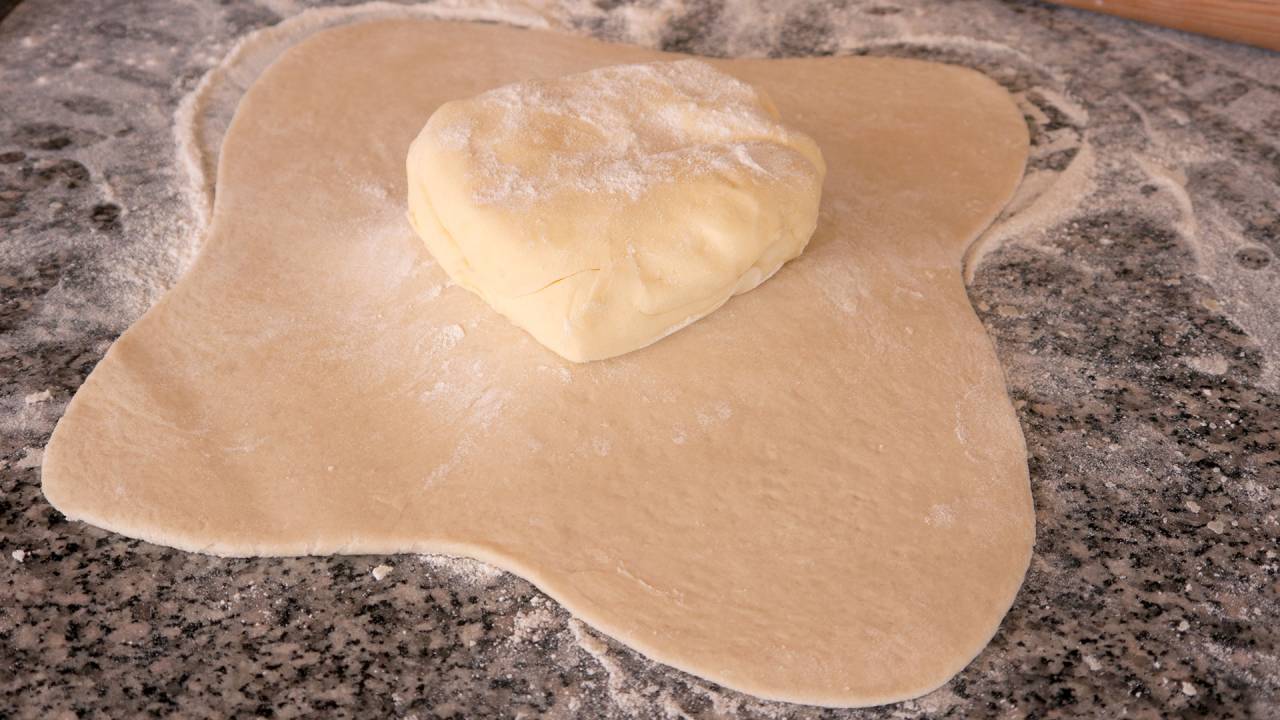
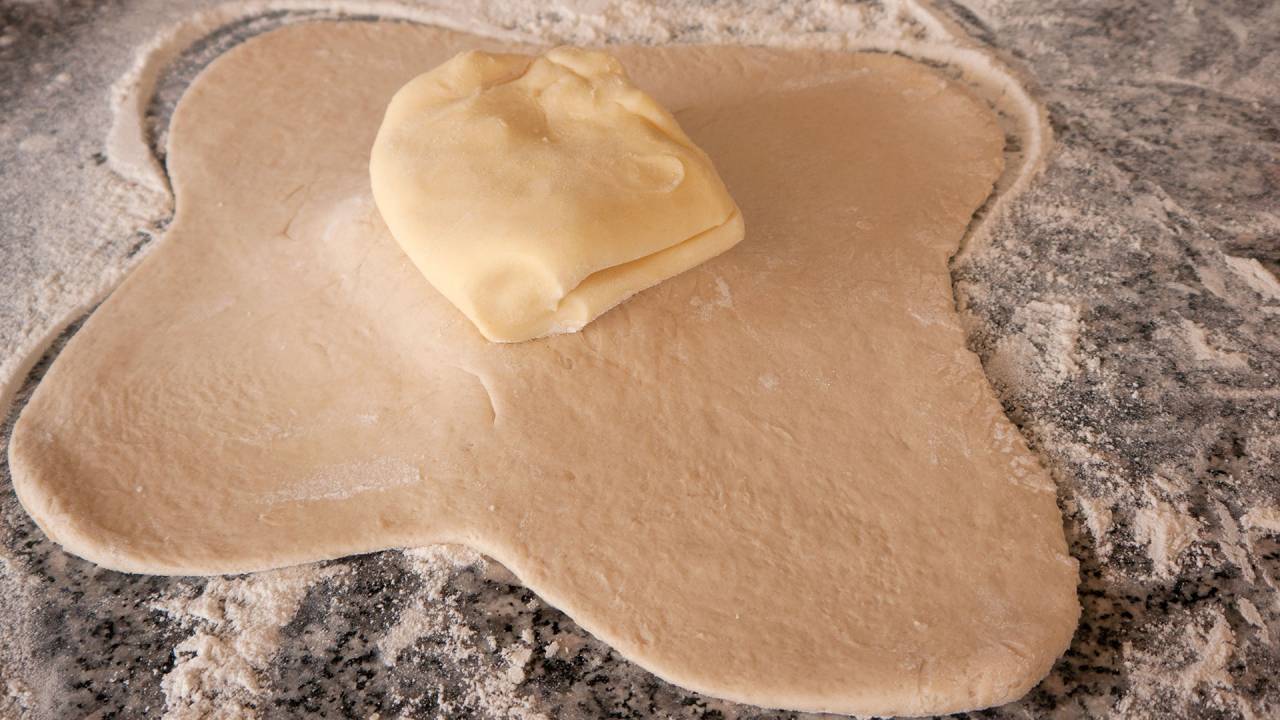
Folding and number of layers
Simple fold: 2 layers
Letter fold: 3 layers
Book fold: 4 layers
If you want to hit a certain number of layers you can figure the result out by multiplying the butter layers in each fold. For example, the ones I have tested in this article:
2 letter folds: 3 x 3 = 9 layers of butter
3 letter folds: 3 x 3 x 3 = 27 layers butter
4 letter folds: 3 x 3 x 3 x 3 = 81 layers of butter
An easy method that still has a reasonable amount of layers could be: 3 x 3 x 2 = 18
But if you are experienced you could also choose to try the more difficult: 3 x 4 x 3 x 4 = 144 layers of butter
Etc. etc. There is a plethora of options.
Between folding each layer is a very good idea to put the dough in the refrigerator for 20 minutes to half an hour. Then the dough and the butter are the easiest to work with. If you leave it in there for too long it might get hard, brittle and difficult to work with though.
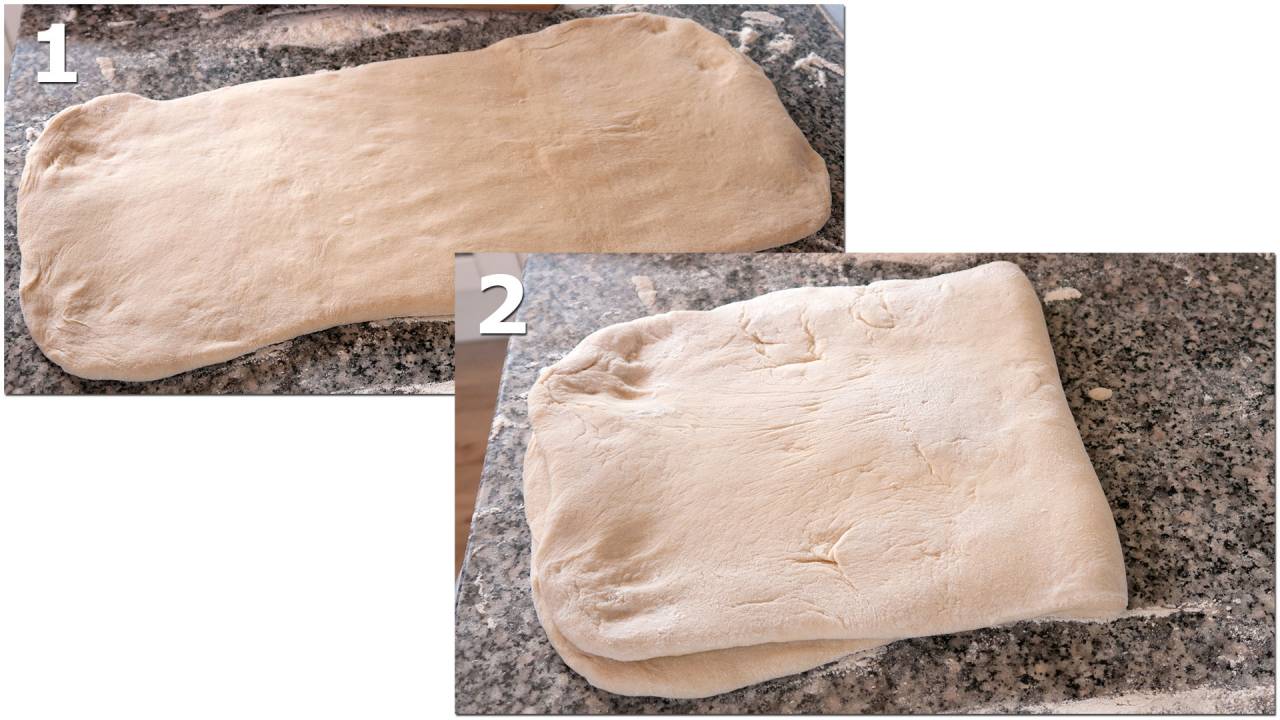
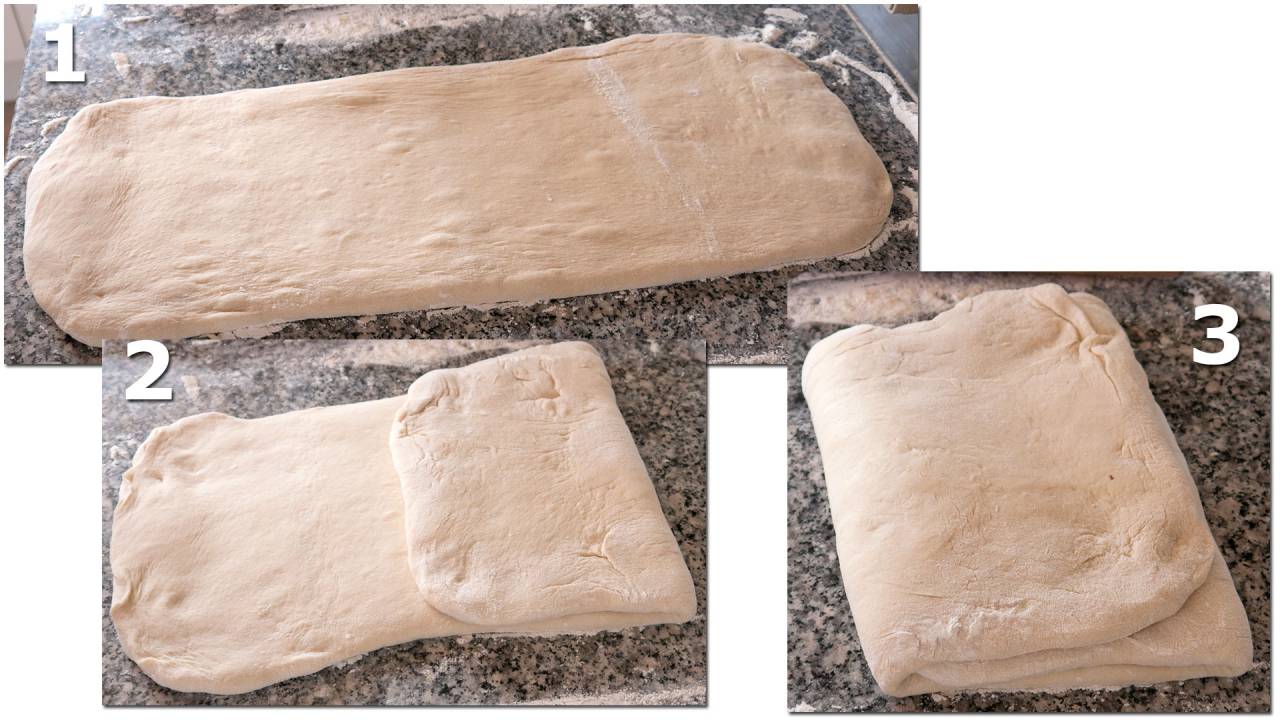
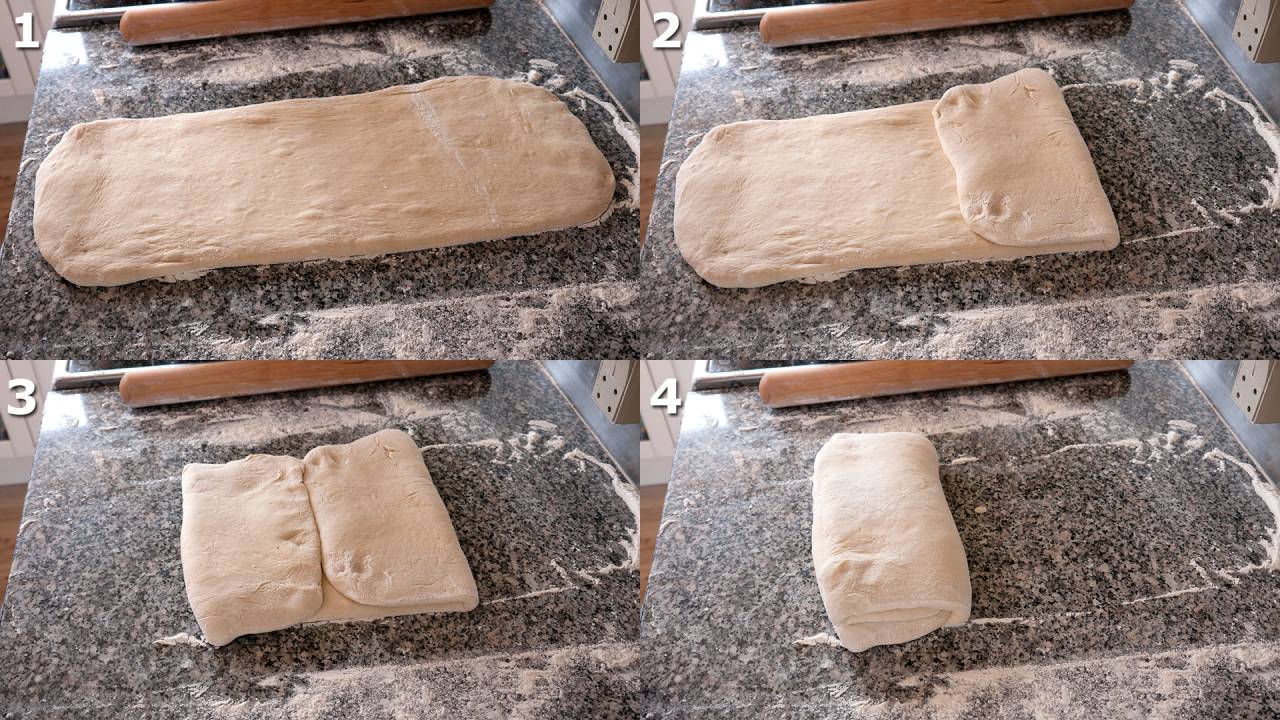
Experimental variations
I tried with all combinations of:
Amount of butter: 50%, 30% and number of layers: 9,27,81
I then made 4 types of bread
- "Unformed" which is simply the laminated pastry cut into squares and baked.
- Danish pastry (spandauer), which is the most common type of pastry.
- Pain au chocolat
- Croissant.
So in all, I tested 24 variations of lamination.
However the results are valid for all kinds of laminated bread. Whether it's pastry, cream buns, croissant, etc.
There are pictures of all the results at the bottom of this recipe.
When you look at the pictures at the bottom so you should look at
- The crust
- whether it is nice and smooth.
- How much it bubbles up.
- Whether it peels of in flakes.
- Whether there is clearly visibly separated layers where the dough ends.
- how many layers you can see.
- The crumb
- Whether there are distinct layers or it just looks like a bunn.
- how many layers you can see.
- How thin the layers are.
- Whether the air bubbles are large or small
- Whether they are uniformly distributed.
What method you should end up using is a matter of taste, and should be decided by what kind of bread you want to end up with.
Perhaps you want a very "cakey" airy croissant for filling with sweets, or perhaps you want a croissant that is more bread like for serving with a creamy soup.
You must also take into account that the more folds, the harder it is to accomplish a good result. For beginners, it is probably a good idea to start with 9 (3x3) or 18 (3x3x2) layer.
Now I'm not a professional baker who bakes croissants every day, so individual variations in the result below can easily because I'm not consistent enough from time to time.
Specifically, I wonder about the uneven, bubbled crust on the "50% folding butter - folded into 27 layers". I suspect that it has been kept a little too long in the refrigerator between folds. And so dried out a bit.
Otherwise I think I got pretty consistent results.
Conclusion
Number of layers
The main difference is the difficulty of folding the dough, the time spent in forming the final texture and the appearance of the bread.
It goes without saying that it is harder to fold to 81 layers than 9 layers, and with the resting between the folds it also take somewhat longer to do.
Many layers and only a little folding butter gives the most bread-like result.
Few layers and a lot of butter results in very flaky crust and a looser crumb. But they are definitely worth eating, so it can be recommended as a starting method.
Taste
It makes no difference in taste how many times you fold.
It does, however, cause a distinct difference in taste how much butter you fold in.
If there is 30% folding-butter the crumb is the most like bread. Best suited to filling with something salty like ham, cheese, meat, etc.
If there is a 50% folding-butter, the crumb is moister, softer and more cake-like. With a distinct flavor of butter. 50% is the best quantity for croissants to be filled with sweets such as jam, nutella, etc.
The difference is not very significant though, and both quantities of butter are very well suited for both sweet and savory use.
An important notice is, that the last 5 minutes you bake them have very large impact on the texture and flavor of the finished result. When you think they are ready, you should just give them three more minutes to get a more crispy crust with nice flakes flakes and a stronger flavor.
Difficulty
It's a little easier to fold the dough when there is more butter, but as soon as you get some practice in handling the dough, 30% butter is fine too.
The fewer folds you make the easier it is to do.
If do the recommended cooling/resting of the dough between each fold, it is considerably easier to achieve a great result. The dough is also easier to work with.
The best croissant
It turned out that I did not like the result of one single method better than other, There was no one amount of butter and number of layers that gave the best overall result. So from now on I will alternate between 27 and 81 layers and 30% and 50% rolling-butter. Depending on usage.
The ones I want to make and put in the freezer for general purpose use though will be 30% rolling-butter in 27 layers. Easy, flexible and suitable for all occasions. Well ok. Now I write "easy". I mean "easy for a croissant".
Notes
It is important with the last rise before baking. It can make a big difference in the fluffiness and crumb structure that it gets to rise for 1 or 2 hours as needed. make sure not to over-rise them though, as they will collapse when you brush and bake them
They must be brushed with egg wash if you want to end up with a nice brown crust.
Be very careful not to push or pull the dough with the cake roll. It is easy to tear a hole in the dough then. You must only press down and roll.
For that reason, a solid French rolling pin without separate handles is also better suited than a classic rolling pin with an axle inside and the separate handles.
If you find it difficult to roll it out in a perfect square you can cut of the most uneven end and put it inside the middle of the fold. I demonstrate this in my croissant video.
Laminated bread is very suitable for freezing. just freeze down after the last rise. Just when should have baked it. you can either thaw it or put it directly into the oven. Thawing first makes it marginally better.
Examples below
- 30% rollingbutter - folded in 9 layers
- 30% rollingbutter - folded in 27 layers
- 30% rollingbutter - folded in 81 layers
- 50% rollingbutter - folded in 9 layers
- 50% rollingbutter - folded in 27 layers
- 50% rollingbutter - folded in 81 layers
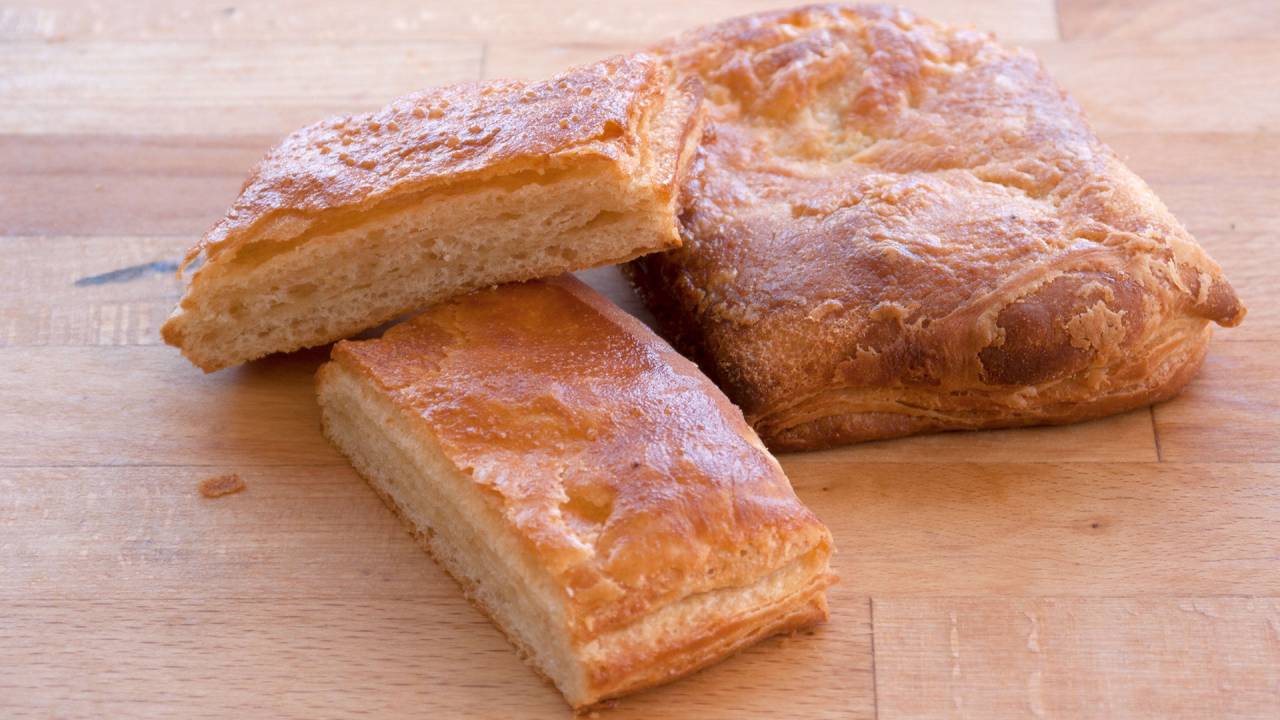
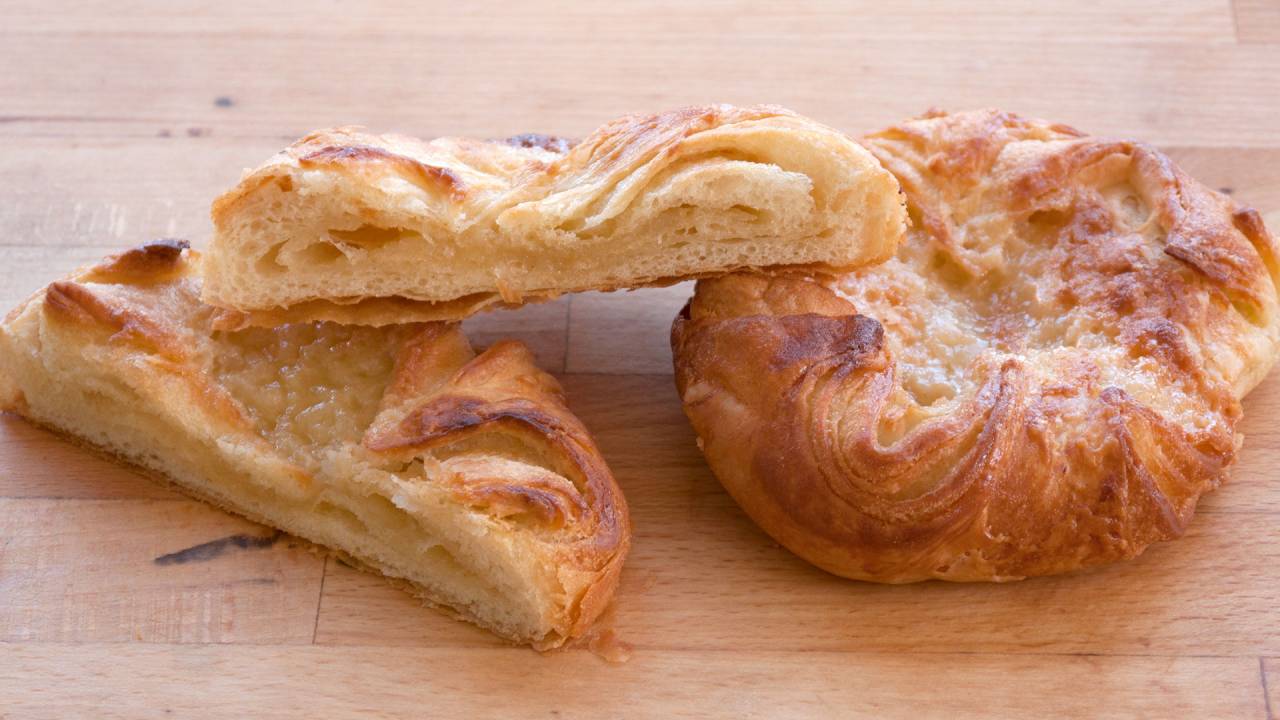
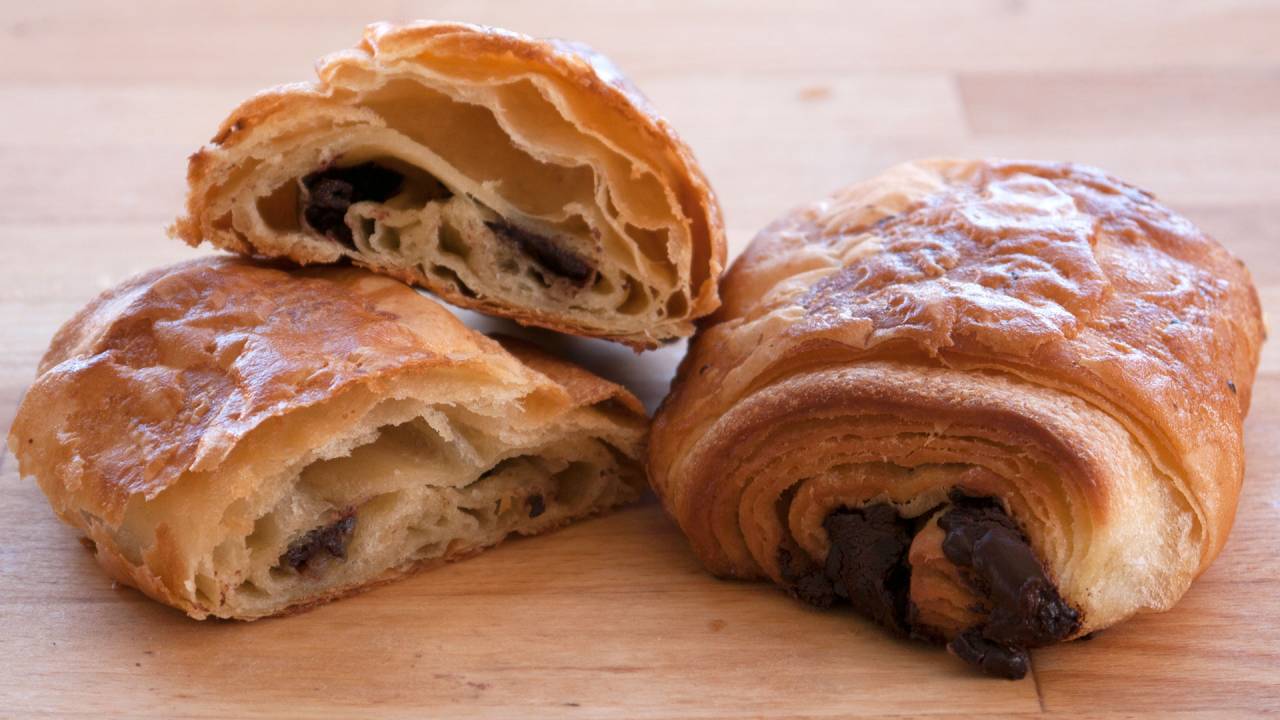
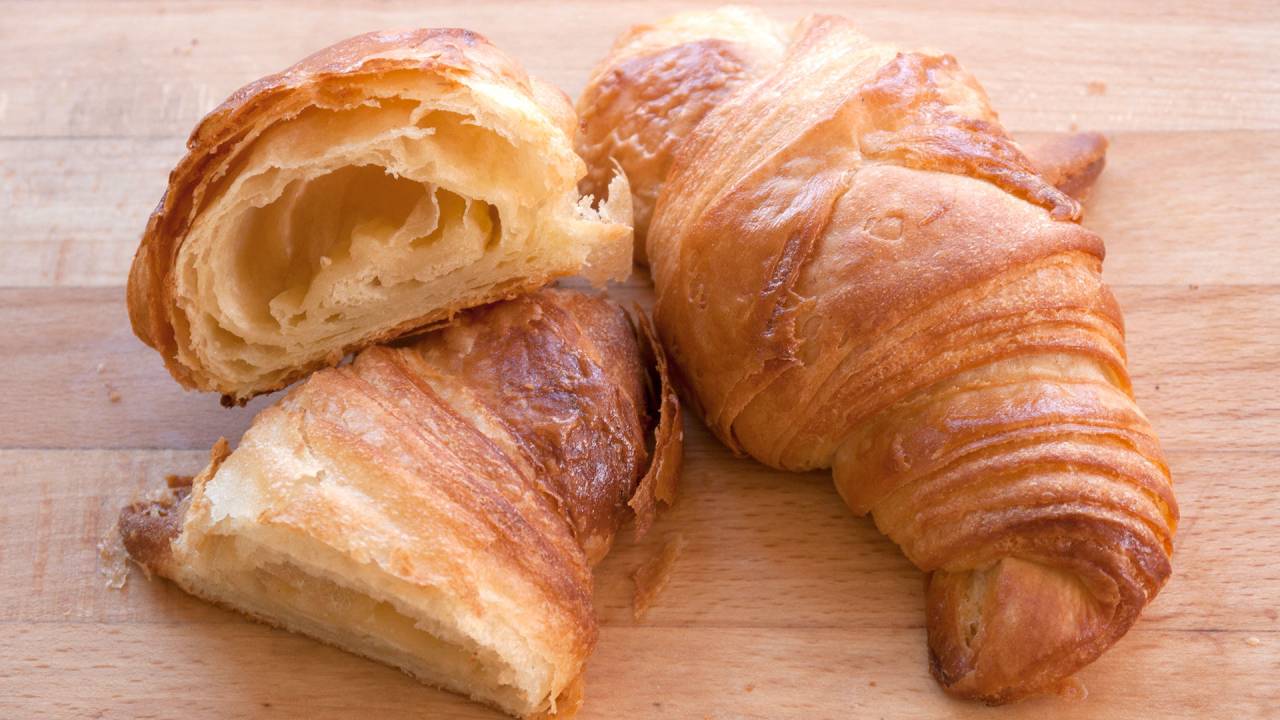
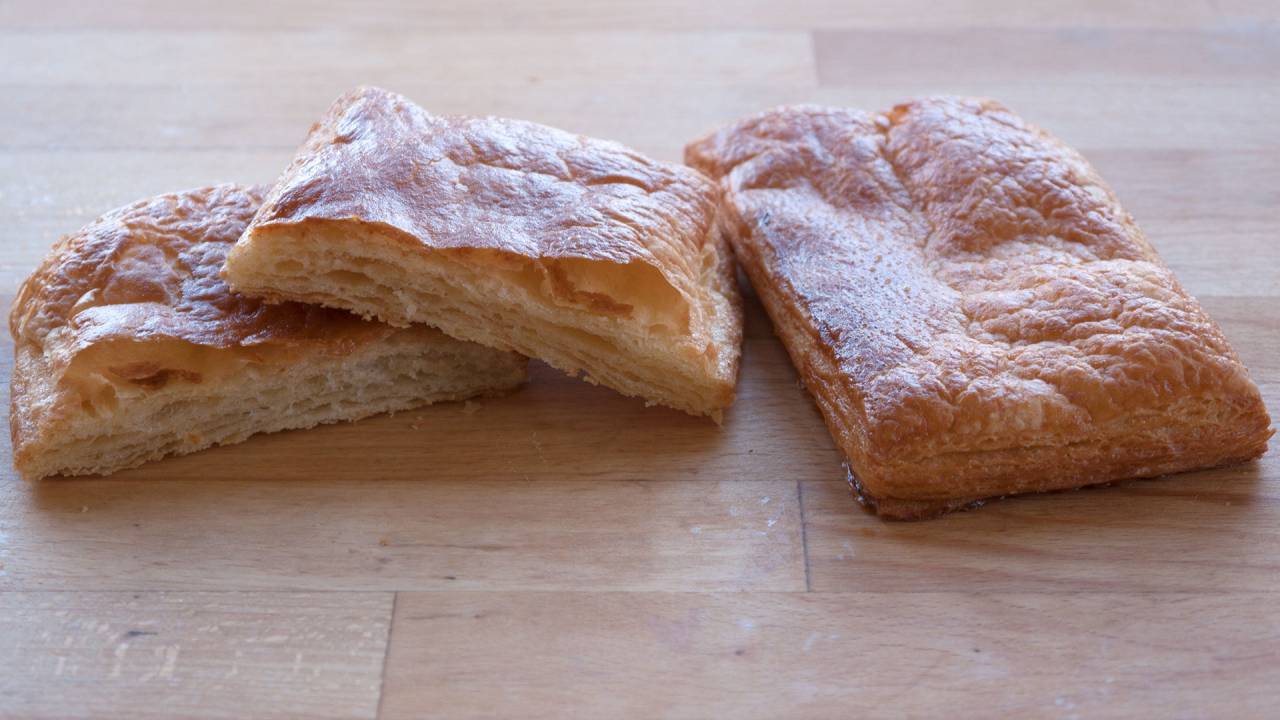
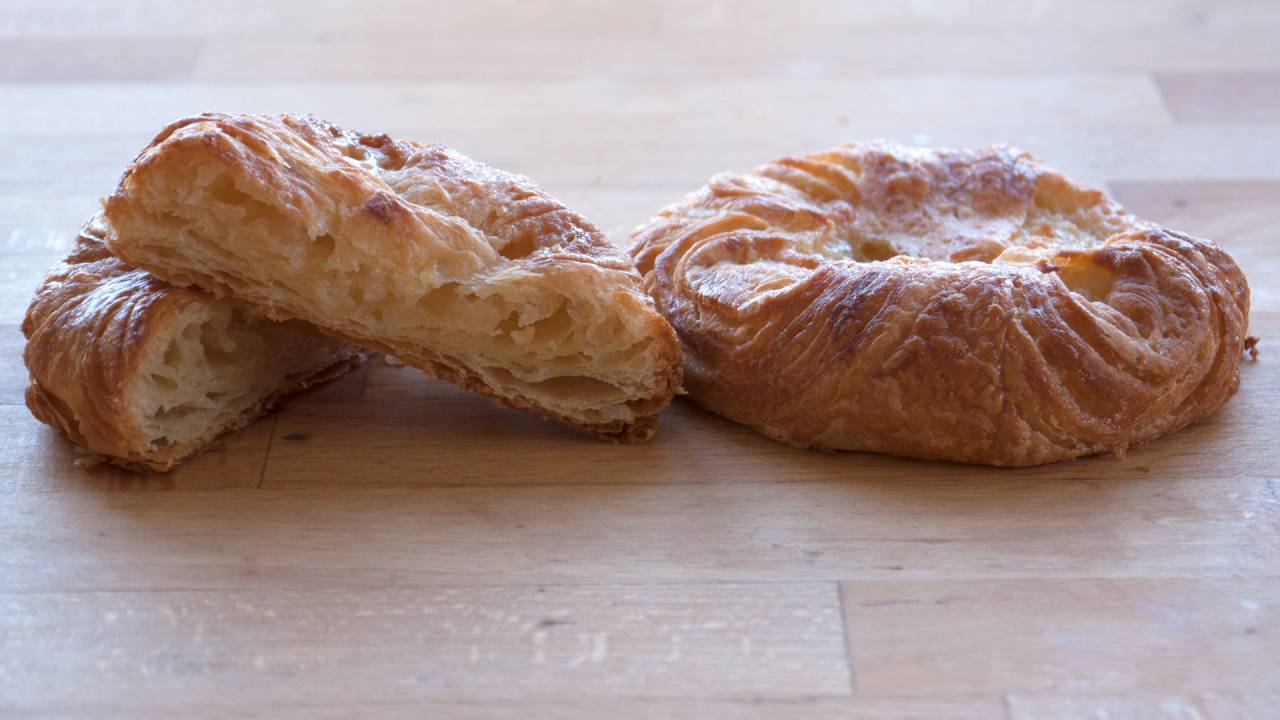
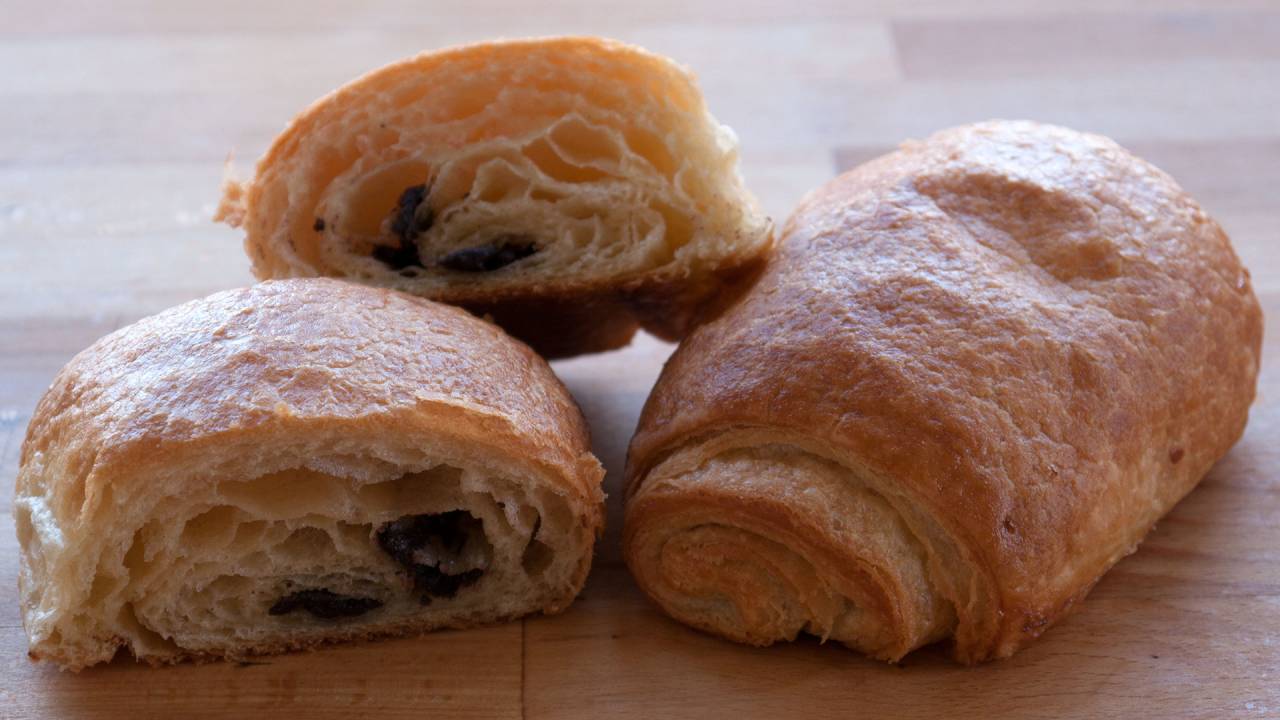
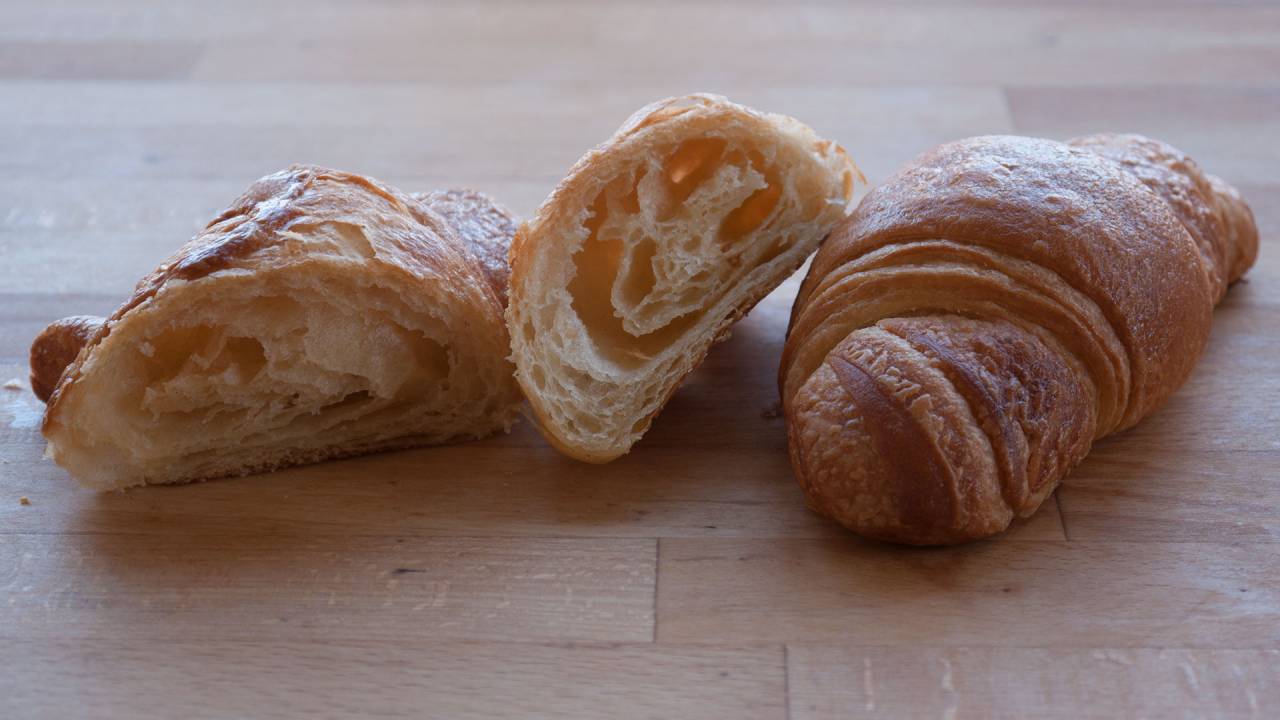
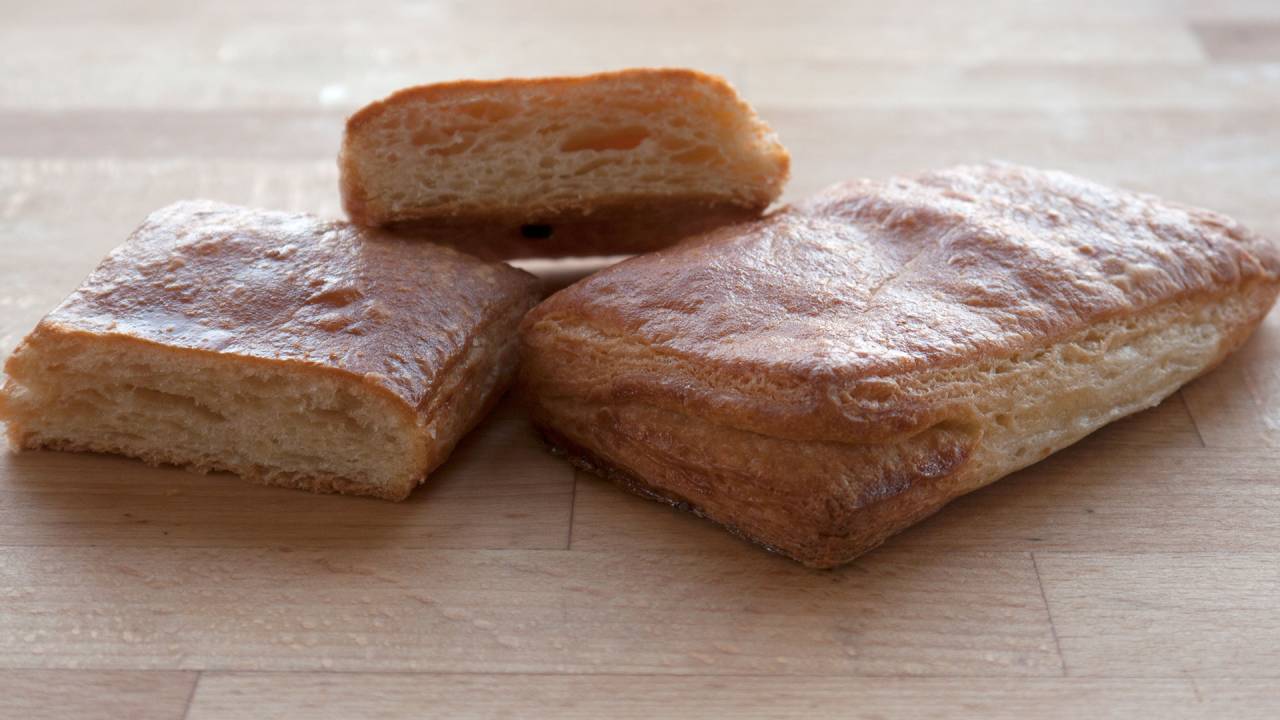
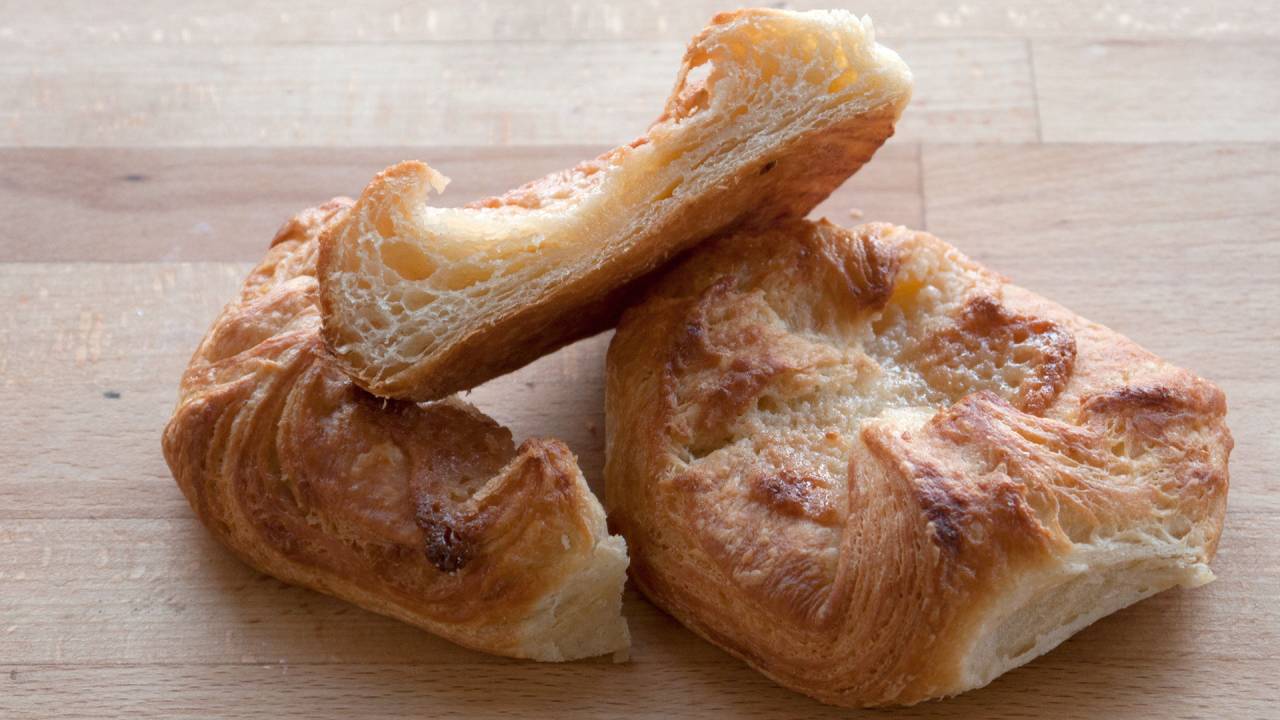
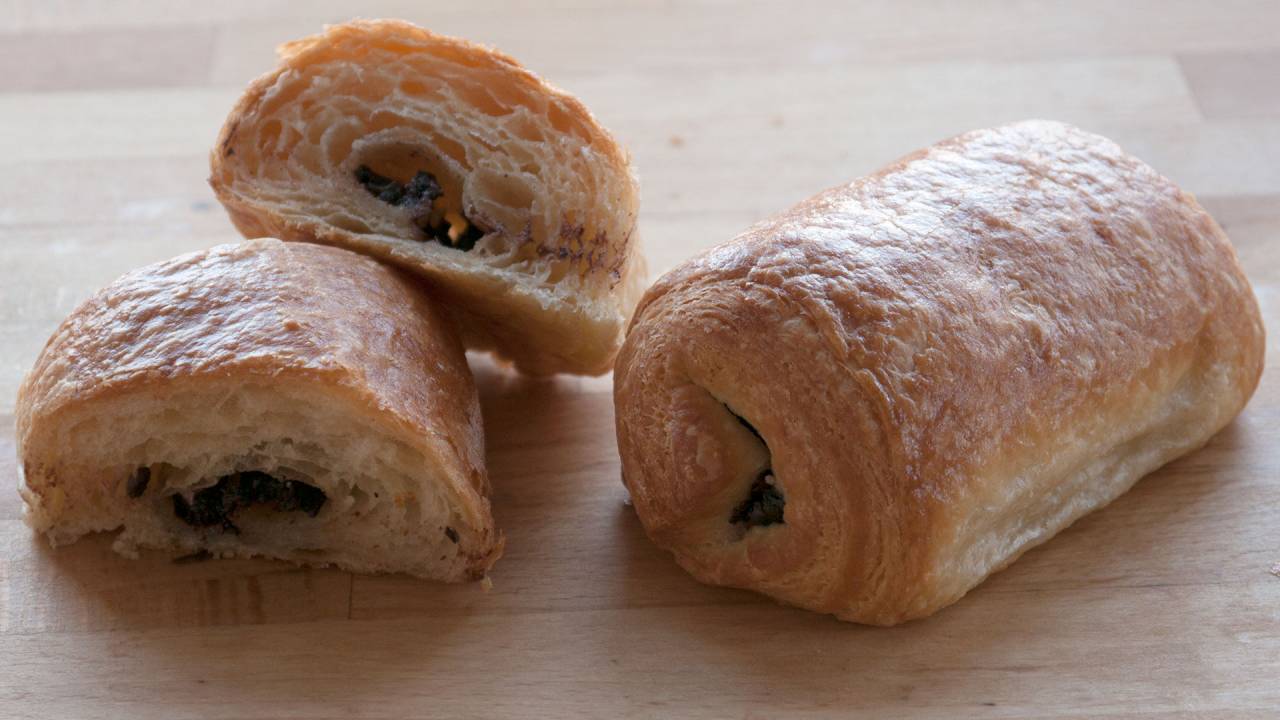
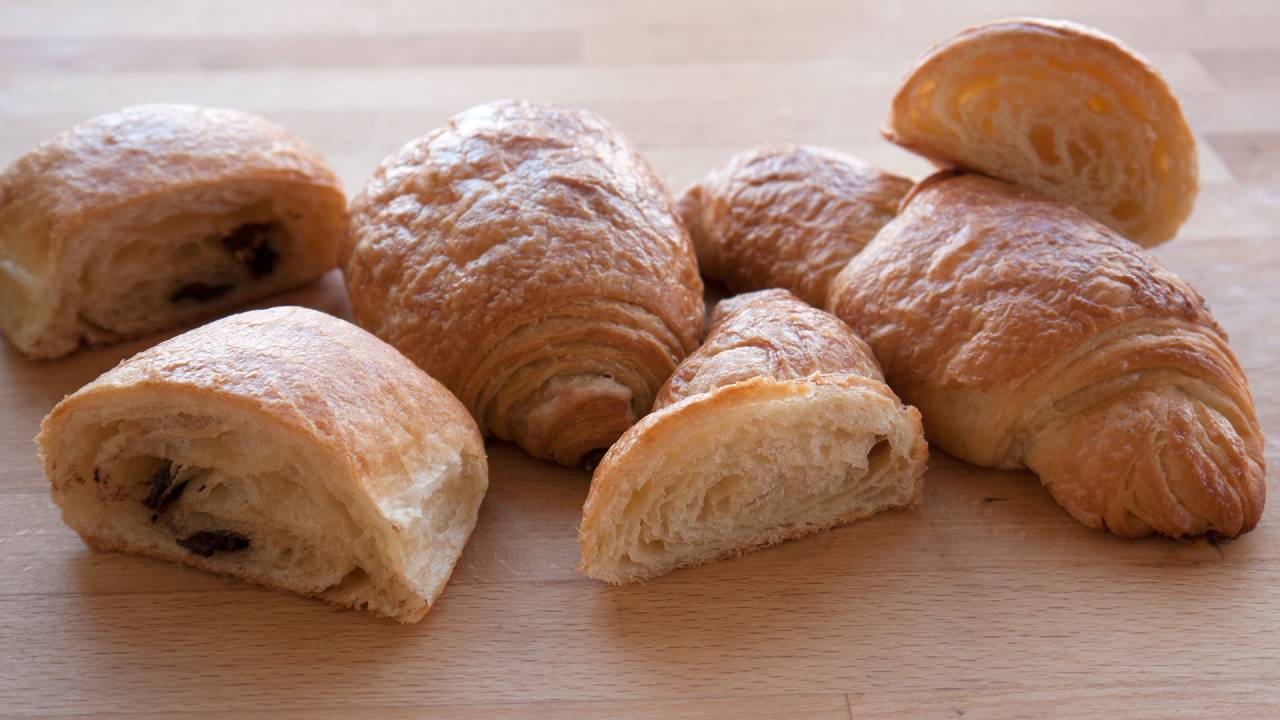
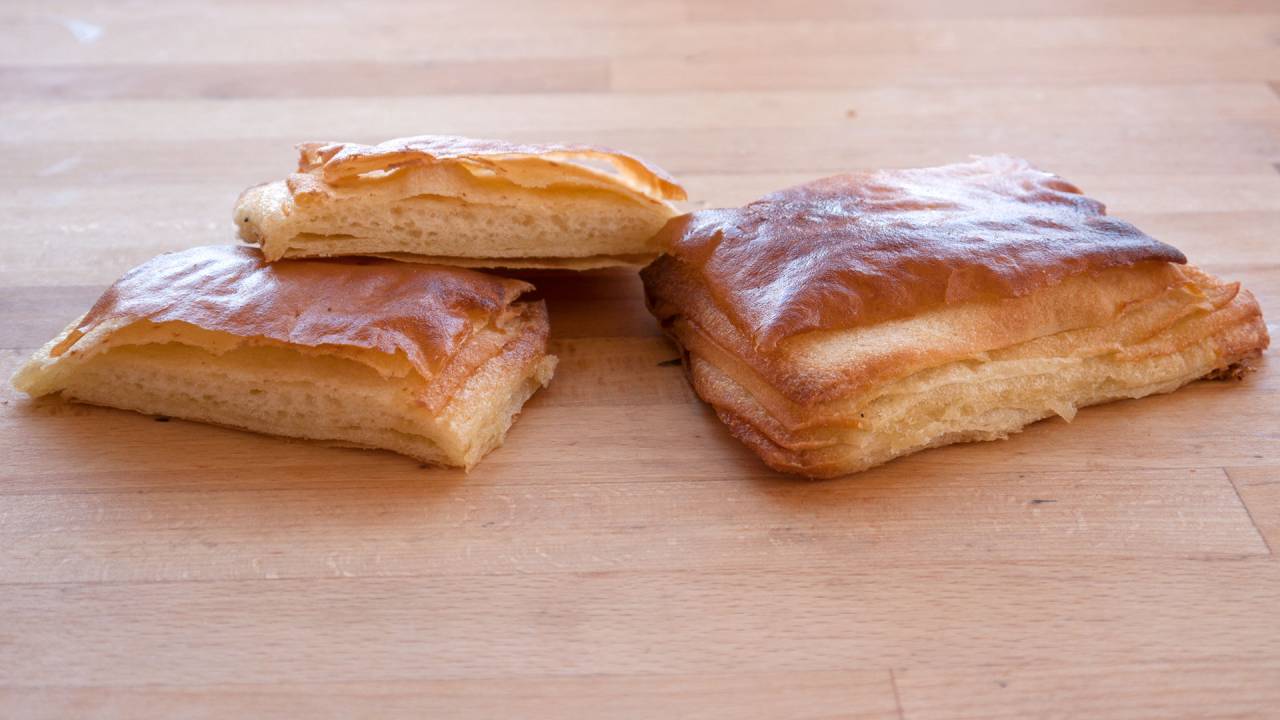
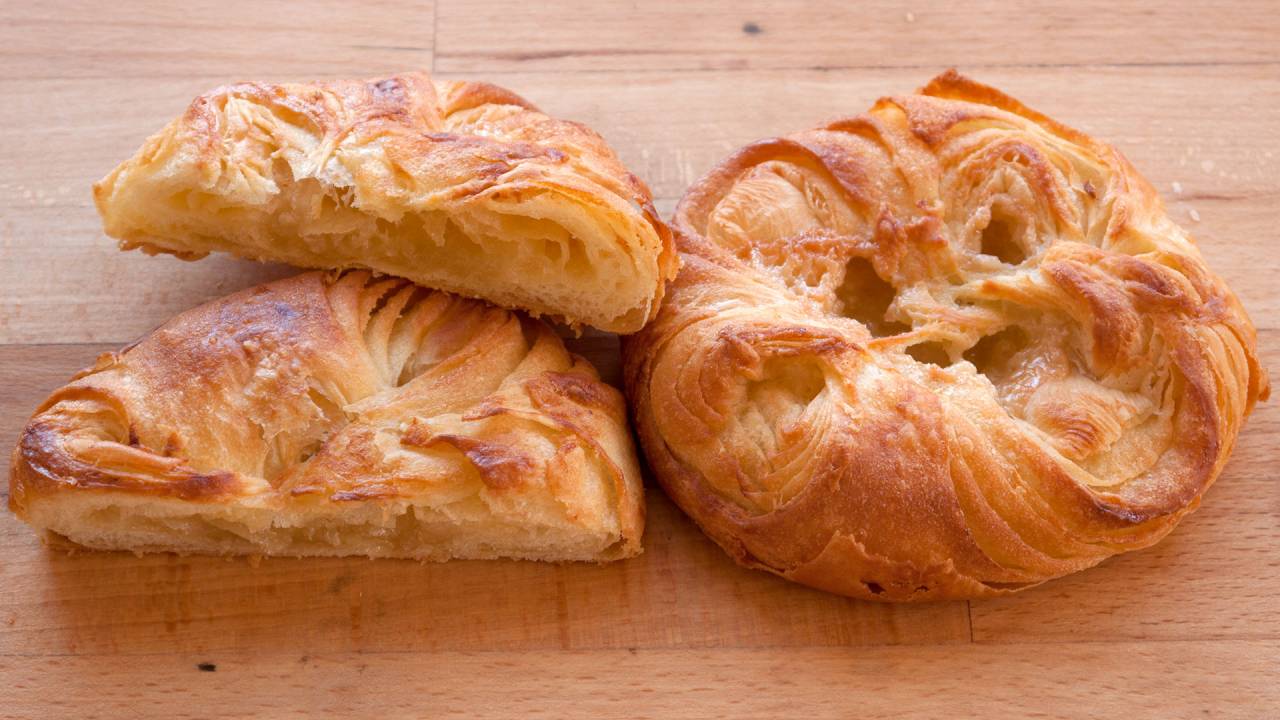
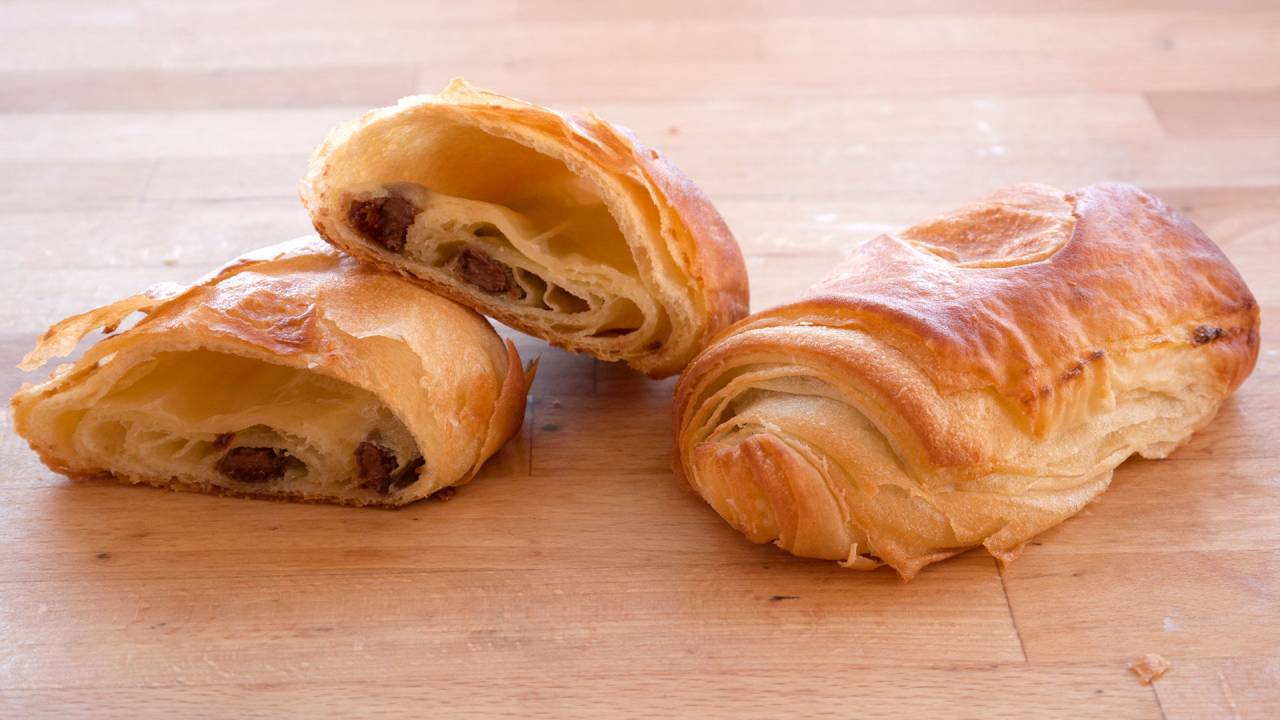
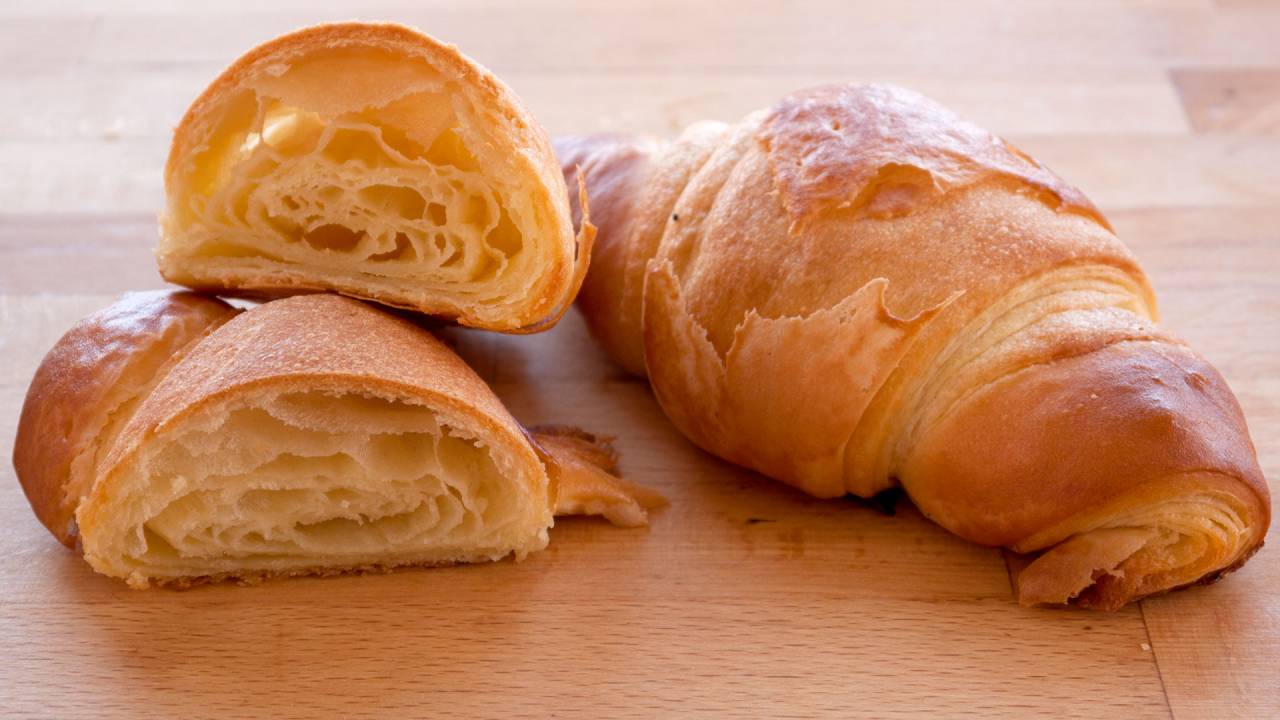
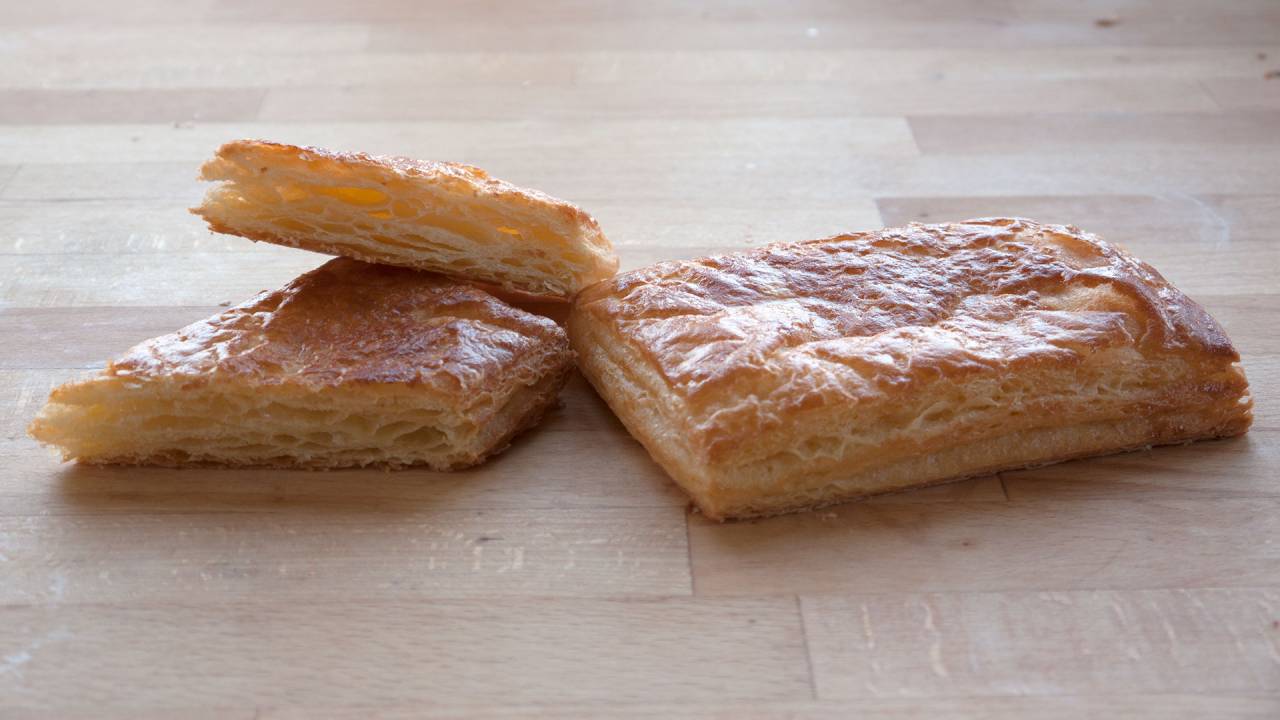

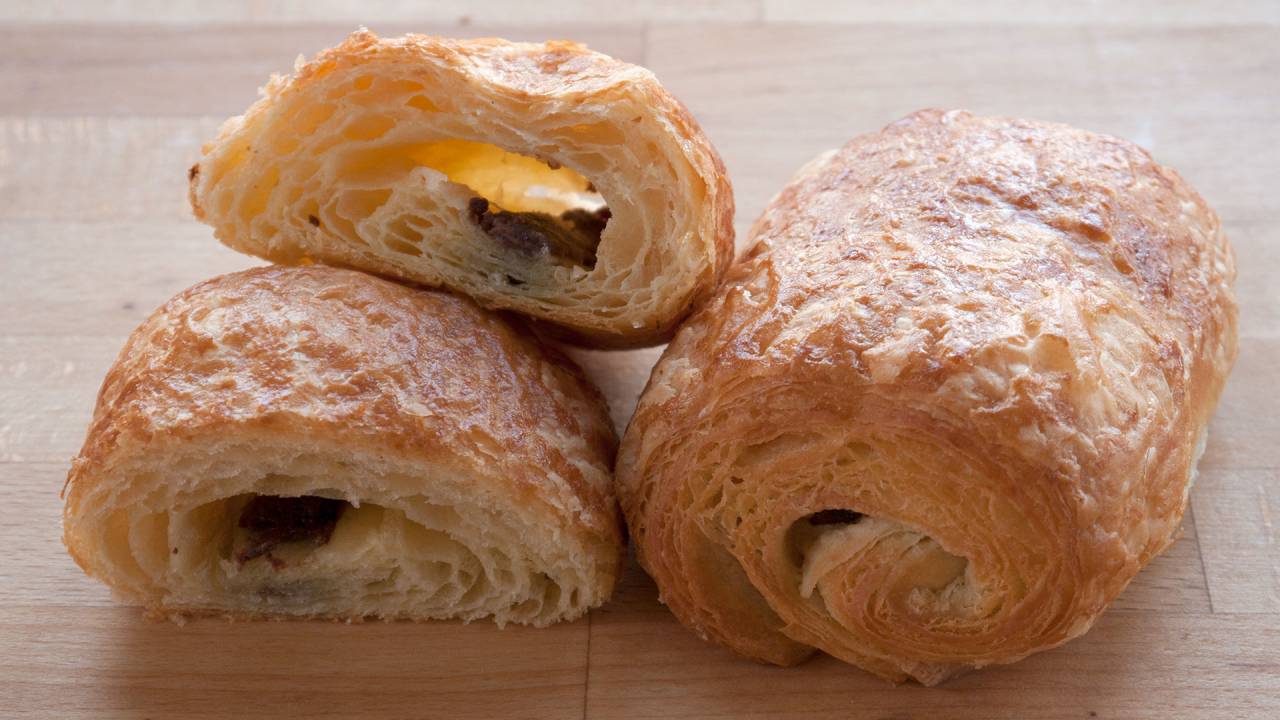
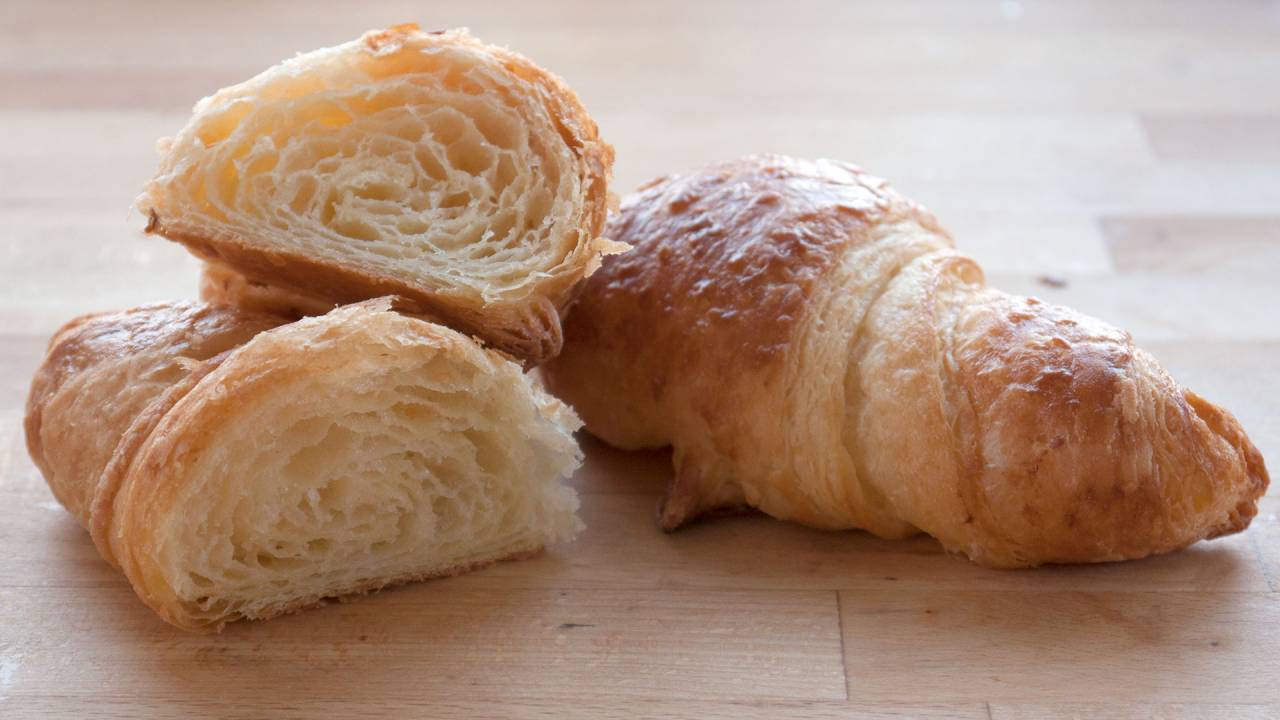
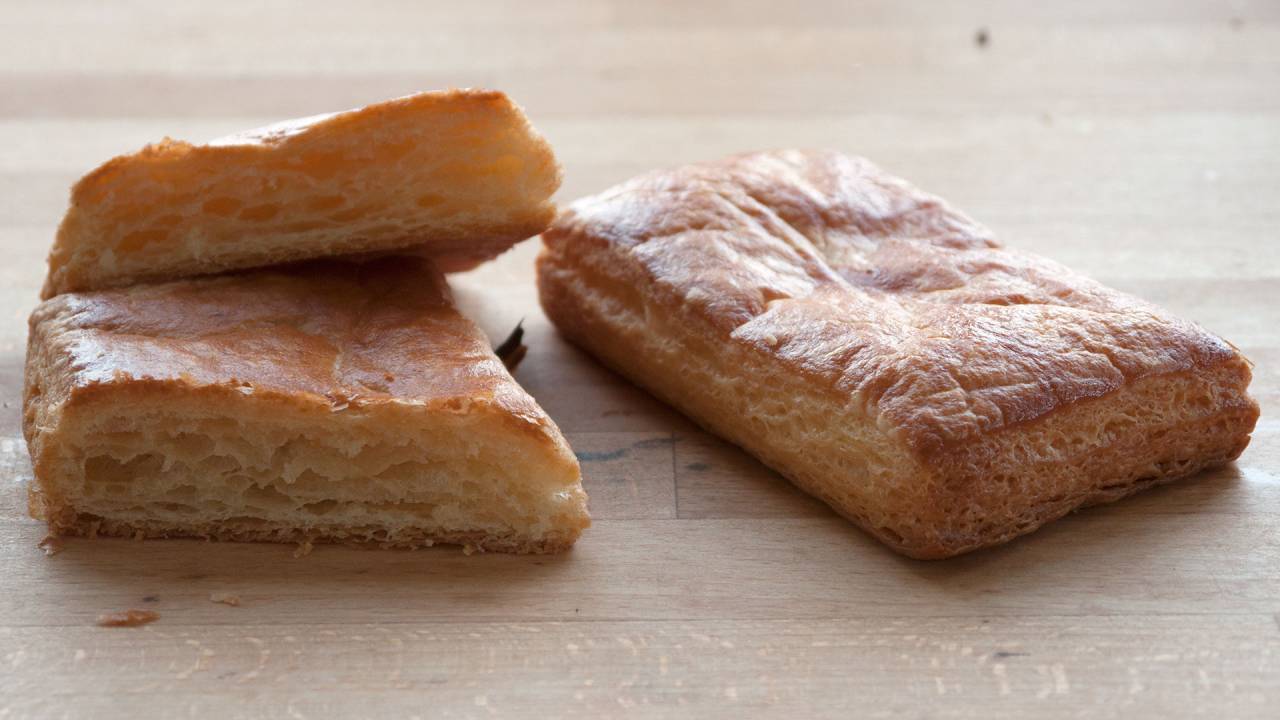
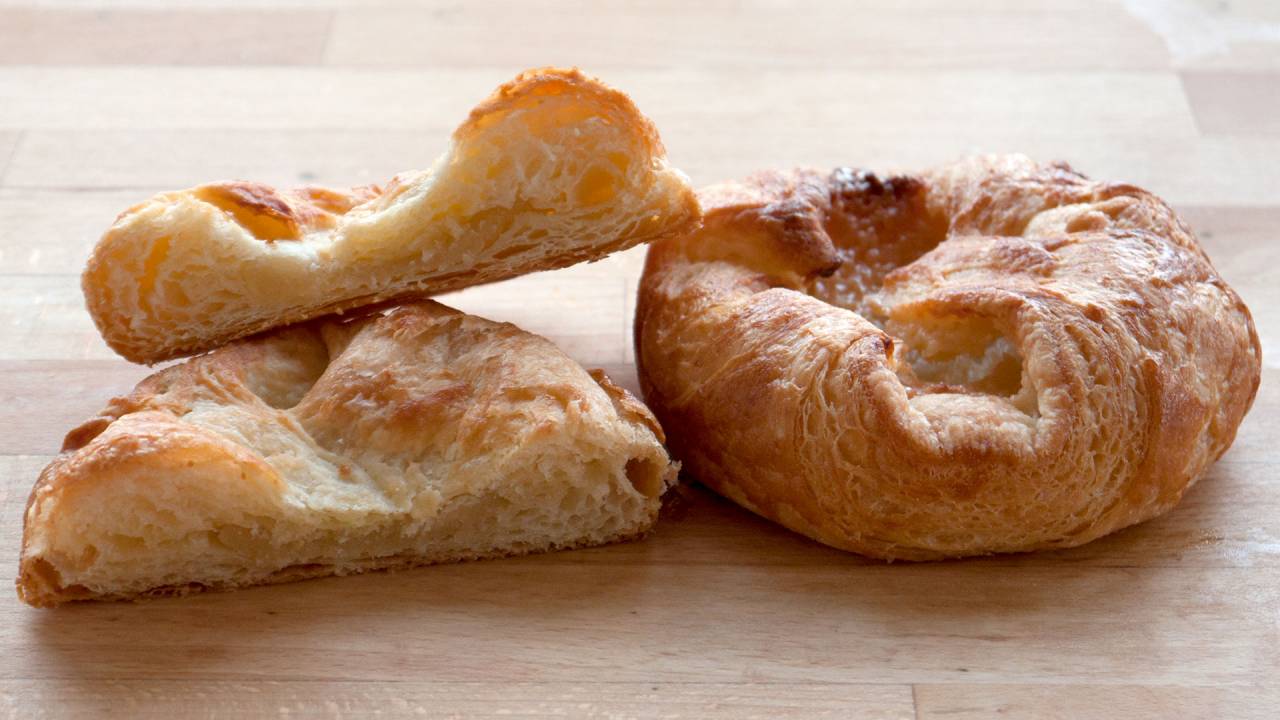
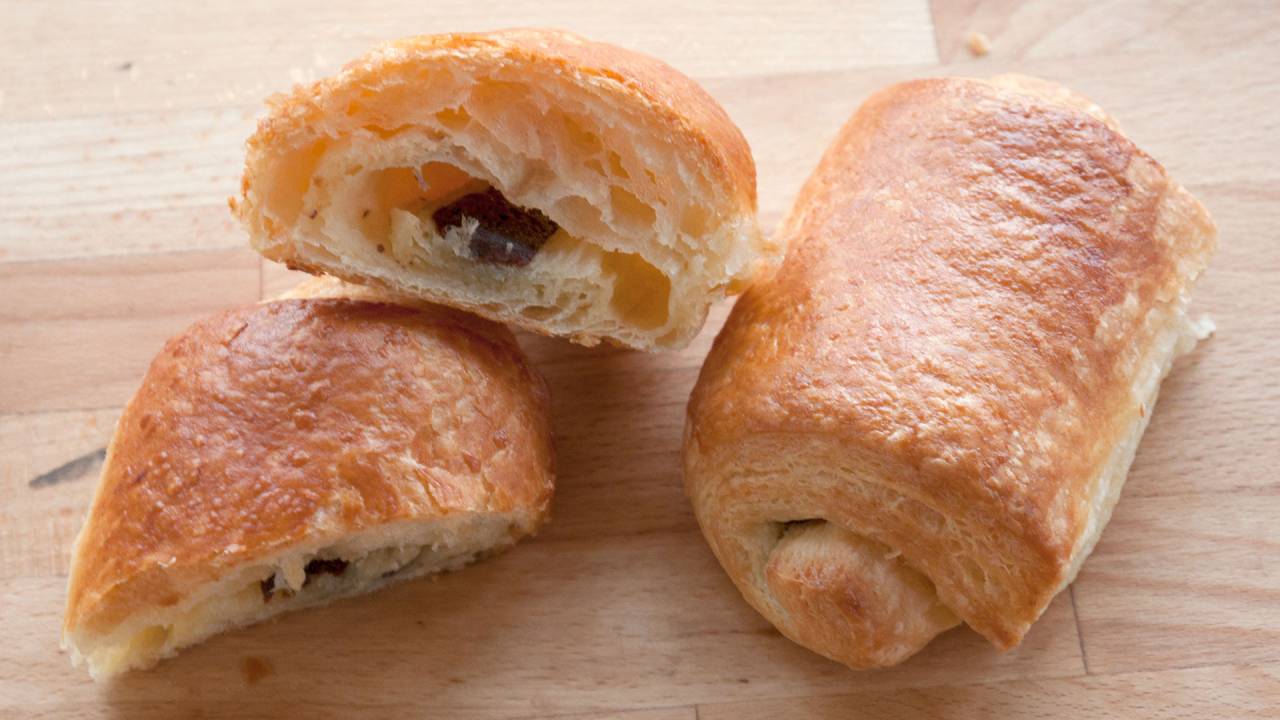
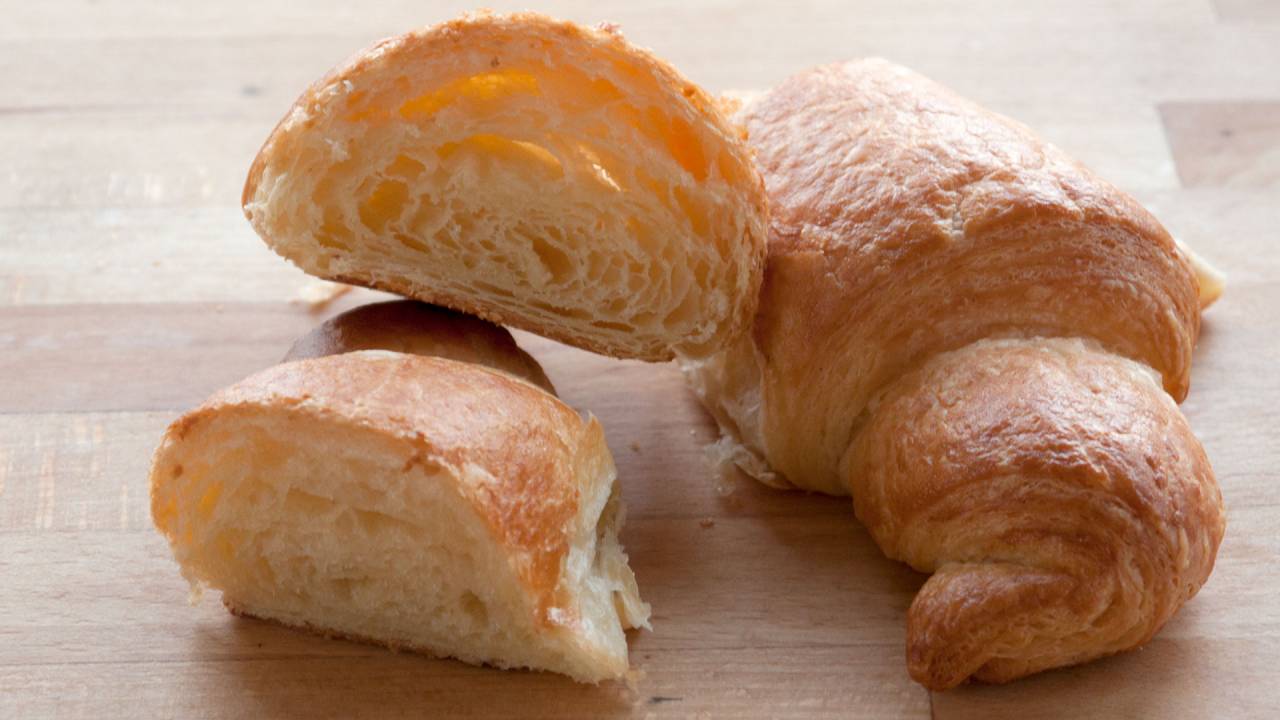
Thanks! Won forget to butter the folds!;)
Won´t** :)))))))))))))))
This is good info man. Thanks for sharing!! Also, is there a typo error in the description for 50% butter pictures? There are 2 x 3 sets of 81 layers description.
